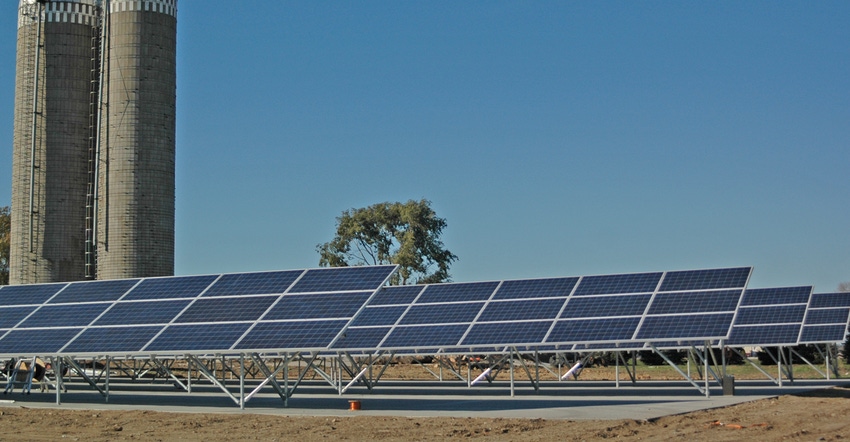September 23, 2020

Renewable energy has significantly increased in recent years, and the number of wind farms and the size of wind turbines are a visual reminder of renewable development. Because of higher development cost, solar electric systems, also called solar photovoltaic, have lagged in commercial electric development. In recent years, the dramatic price decline of solar PV has led to greater interest in utility-scale solar development.
For instance, consider a 5-megawatt system similar to the one constructed west of Lincoln north of Interstate 80. Based on solar cost benchmarks published by the National Renewable Energy Lab, a 5-megawatt system constructed in 2010 would have cost $27.6 million, compared to $5.65 million to construct the same size project in 2018.
Combine this with the 26% federal tax credit, and the economics of utility-scale solar are sufficient for major development interest across the nation. The federal tax credit is 26% and set to decline to 22% in 2021, then 10% for future years.
Utility-scale solar farms are constructed on open ground, generally near access to the electric transmission grid. Other considerations for siting solar farms may be the solar resource, proximity to electricity demand, other local incentives and regional value of electricity.
Access to land is an early step in utility-scale solar development. Farmers and landowners in Nebraska are being approached to lease land for solar development, and these landowners are facing important long-term decisions about the future of their land.
Factors to consider
When negotiating a solar leasing contract, many factors should be considered. According to the Farmland Owner's Guide to Solar Leasing published by the National Agricultural Law Center, these considerations are:
length of the commitment
who has legal interests in the land
impacts on the farm and land
family matters
property taxes
government programs
liability and insurance
neighbor and community relations
Utility solar farmland leases are long-term contracts and need to be reviewed by a qualified attorney. In Nebraska, these leases can be as many as 40 years and longer if extended.
For many landowners, this long-term contract may extend into the next generation and should be discussed with the family. Landowners at times feel pressured to sign contracts, and this can be stressful. Take the time to review and negotiate these contracts, and always know that saying "no" is an option.
Solar leases can be attractive to landowners as they can offer long-term income and profitability on the leased land. A study in Michigan of landowners with wind farm leases showed farmers with leases invested more in their farms than farmers without leases.
This suggests the lease income may influence farm stability and longevity. Solar farms such as wind farms add to county tax income through a nameplate capacity tax and property tax.
Different from wind farms
Utility-scale solar farms are unlike wind farms in some ways. For example, wind turbines may take only 1 or 2 acres out of production per turbine, because farmers can farm around the base of the turbine and turbine access road. In comparison, a 1,000-acre solar farm will take all 1,000 acres out of production.
Solar farms are low to the ground and have less impact on the skyline. Generally, solar farms will be fenced with vegetation growing among the solar panels. Vegetation could be perennial pollinators, grass or weeds. Common management is periodic mowing to ensure plants do not disrupt solar operation and production.
Landowners approached about solar leases should seek advice from an attorney and take time to thoroughly consider the contract and its implications to their farmland. Review of the Farmland Owner's Guide to Solar Leasing published by the National Agricultural Law Center will help frame the issues and considerations for solar leases.
For additional questions about solar leasing, see the Utility Scale Solar section on CropWatch, or contact John Hay, Extension educator at 402-472-0408 or [email protected].
Hay is a Nebraska Extension educator for bioenergy.
Source: UNL CropWatch, which is solely responsible for the information provided and is wholly owned by the source. Informa Business Media and all its subsidiaries are not responsible for any of the content contained in this information asset.
You May Also Like




